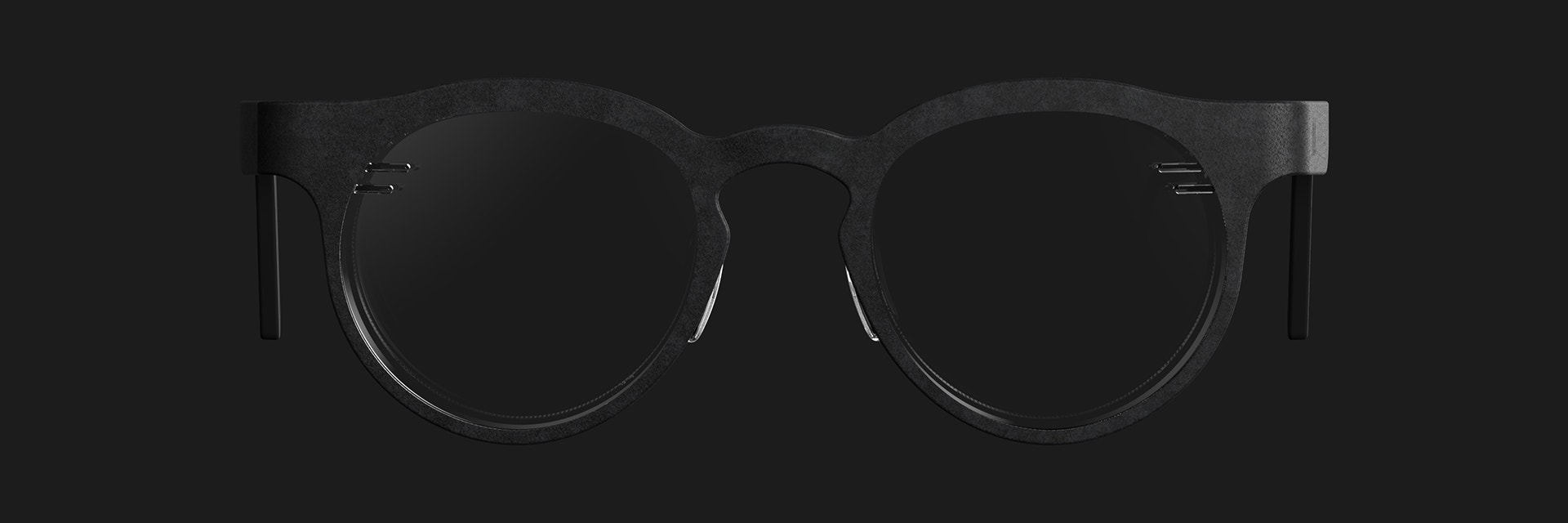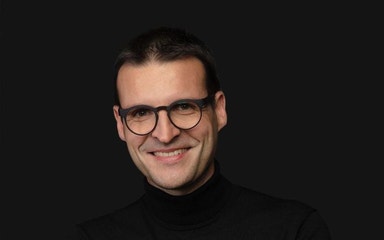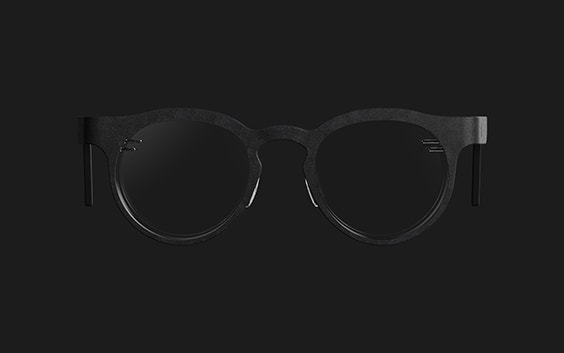
INTERVIEW
3DP&Me: "A Fundamentally Different Approach to Eyesight"
“Smart eyewear is usually associated with function…what it can help you do. With the right technology, it can also be about fashion and a fundamentally different approach to eyesight.”
An interview with Paul Marchal, CEO of transformative ‘autofocal’ eyewear specialist, Morrow.
Welcome Paul. Can you start off by telling us a little about your company, Morrow, and how you and your partner have approached smart eyewear from a different angle?
Yes of course. I should perhaps start by saying my background is not in eyewear. It is in engineering. I worked as an electrical engineer with IMEC - an international R&D and innovation hub based in Belgium which specialises in the fields of nanoelectronics and digital technologies. It’s a role which meant I spent a great deal of time researching emerging and exciting technical innovations. That’s when I met Jelle, my business partner. He’d developed the concept of ‘tunable’ contact lenses – essentially using nano-technology to develop lenses with the power to adapt according to visual need.
On exploring the market, looking at consumer requirements and examining feasible manufacturing processes, we decided to look into developing the world’s first ‘autofocal’ eyeglasses, an alternative to multifocal glasses. In other words, smart eyewear that mimics how eyes should work enabling the wearer to switch between close-up and distance vision as needed. When needed. We launched our start-up, Morrow, in 2016.
How exactly does autofocal technology work?
A thin layer of liquid crystal embedded in the lenses can be electronically adjusted at the touch of a button to change the index of light refraction. Harnessed the right way, this allows for a shift in lens power by up to +1.5D. It’s the natural, and much needed, step up from varifocal lenses.
Smart eyewear is usually associated with function…what it can help you do. With the right technology, it can also be a fundamentally different approach to eyesight. That’s our take and the very premise of our offering.
At what stage did you start to consider 3D-printed technology for your frames?
From the beginning. Success with smart glasses is not straightforward. It’s not enough that the lenses work as outlined. People have to want to wear them. That means accommodating and hiding the electronics so that they appear as any other brand of eyewear – it means marrying aesthetic appeal with optical capability. We could meet this challenge by capitalising on the design flexibility and physical performance offered by 3D printing.
Working with Materialise we’ve been able to co-create a durable frame structure to perfectly house the electronic components and battery, and, crucially, one with a desirable surface finish for the all-important aesthetic appeal. The material we are using, paired with design, also enables us to reduce frame weight. The technical nature of our lenses makes them slightly heavier than standard, so this effectively ensures performance does not come at the expense of comfort.
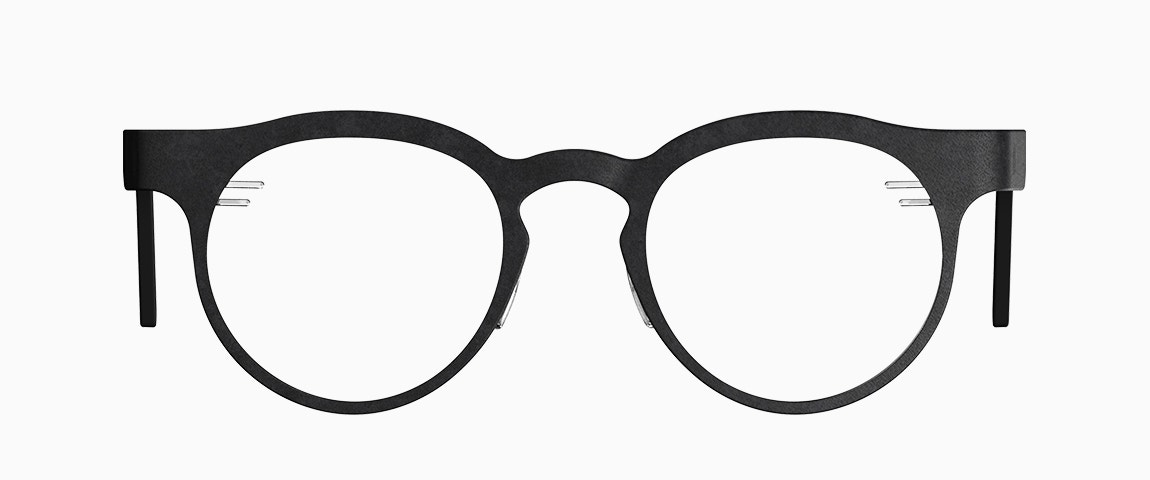
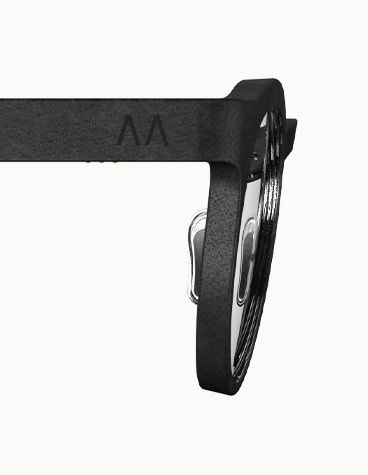
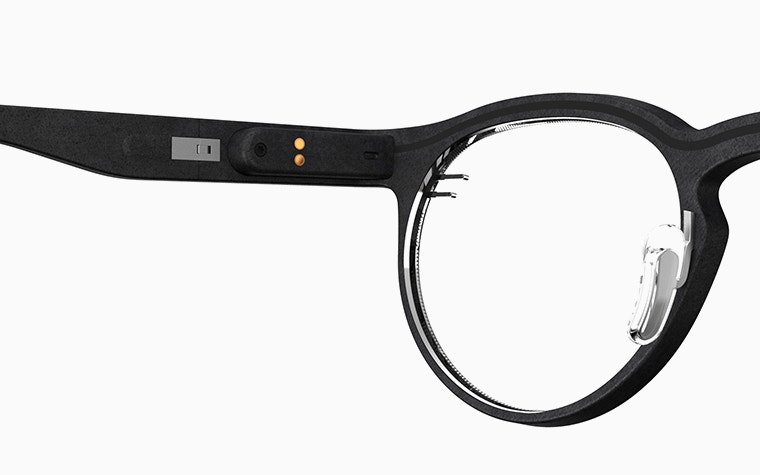
And the idea is that your glasses will be customizable?
Yes. From the colour of the frames to the lens surfaces, coatings and finishes used. That’s the other key benefit of using 3D printing, especially with smart eyewear. Electronics are expensive so you want to keep inventory costs low…making eyewear to order answers that need and helps mitigate the stock risk associated with a more conventional approach.
“Until now, our industry has benefitted from the universal advantages of 3D printing – we’ve been riding an open ticket. It’s now time to see where we can go on the journey when smart eyewear is the defined destination.”
Has your journey to this point launch been straightforward or have there been any hurdles you’ve had to overcome?
I wouldn’t say hurdles, but we have certainly learned a great deal at every stage of the development process. We still are. But that’s the nature of trying something new.
It’s been a three-year journey to this point due to a number of factors. The level of craftsmanship required to develop and fine-tune a 3DP solution to meet our needs surprised me. We had to go on an eyewear learning curve with Materialise.
It is important to say that we have further to go. The level of finishing still required, time for integrating electronics and the quality control processes necessary, mean that from order to delivery we are looking at around a 15-day turnaround. For business/trade applications of smart eyewear, that’s fine. But consumers want fast fashion – that window has to reduce in order to satisfy current customer expectations.
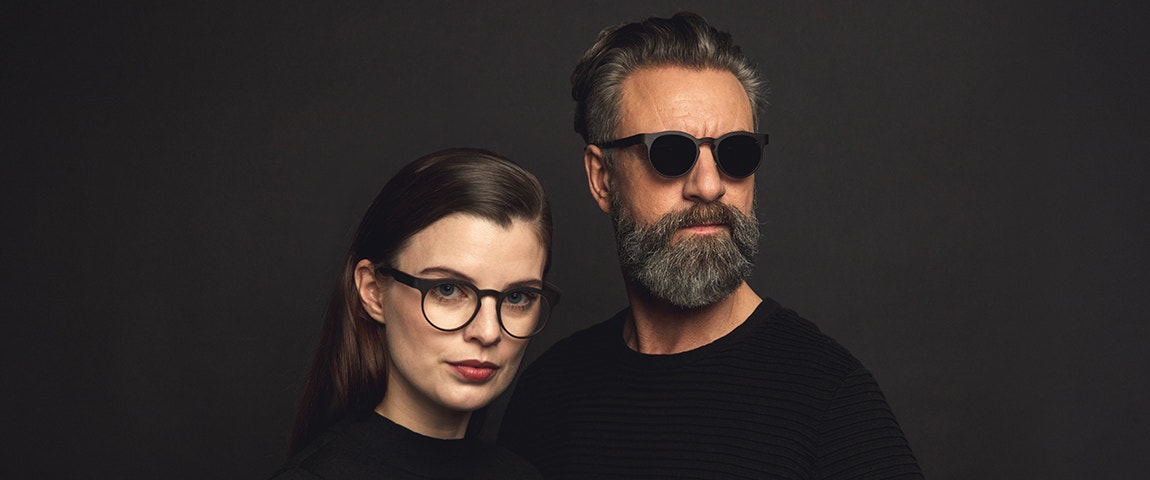
How do you see that happening?
To me, it's clear: materials, processes and software need to be developed specifically for eyewear, not simply applied to it. That’s one of the reasons we’ve chosen to partner with Materialise. They see that this kind of symbiotic relationship is required. Their work with us, other eyewear designers and material vendors like the BASF isn’t just commendable. It’s essential for long-term success in a highly competitive consumer market.
We…the eyewear industry… also have a responsibility to play our role in the feedback loop as it isn’t just about ‘the print’, it’s about the process. Automated manufacturing and end-to-end supply chains. The perfect sale and delivery scenarios don’t just happen. It takes input from both sides to tailor market-matched solutions. It’s both a challenge and an interesting prospect.
The other thing is cost. Naturally we want to keep costs as low as possible without ever compromising quality or component performance. So far, we’ve really talked about frames but 3DP technology has a lot of potential in terms of ‘stealing a march’ on traditionally manufactured electrical components. For example, we are already looking at how 3D-printed conductors can limit our electronics inventory and consequently lower costs. Again, this is where the development of a wider range of 3DP materials will come into play more and more.
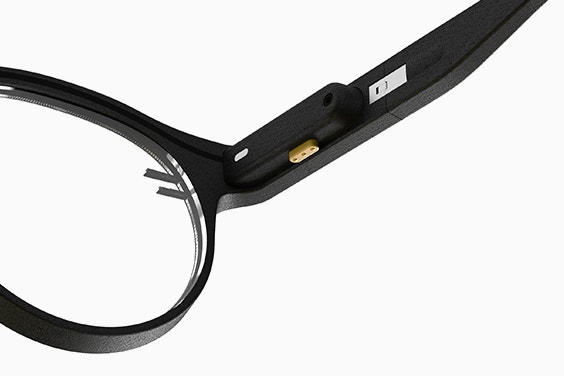

Do you think that applies to all forms of smart eyewear?
Absolutely. For Morrow, our focus is firmly on…well…focus. Helping people see better while looking stylish and feeling comfortable. But the world of smart eyewear is evolving into a much broader beast. Personal assist technologies will soon become wearable. The integration of audio and visual components in glasses, mandatory.
For all the reasons I’ve already mentioned, 3D printing is ideally positioned as an enabling technology for that future, but only if the two industries continue to collaborate on meaningful, eyewear-specific solutions.
Until now, our industry has benefitted from the universal advantages of 3D printing – we’ve been riding an open ticket. It’s now time to see where we can go on the journey when smart eyewear is the defined destination.
Share on:
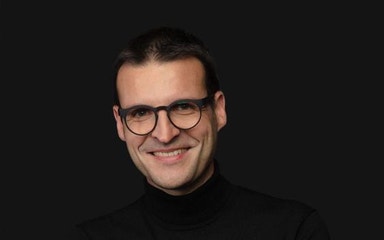
Biography
Paul Marchal
You might also like
Never miss a story like this. Get curated content delivered straight to your inbox.
